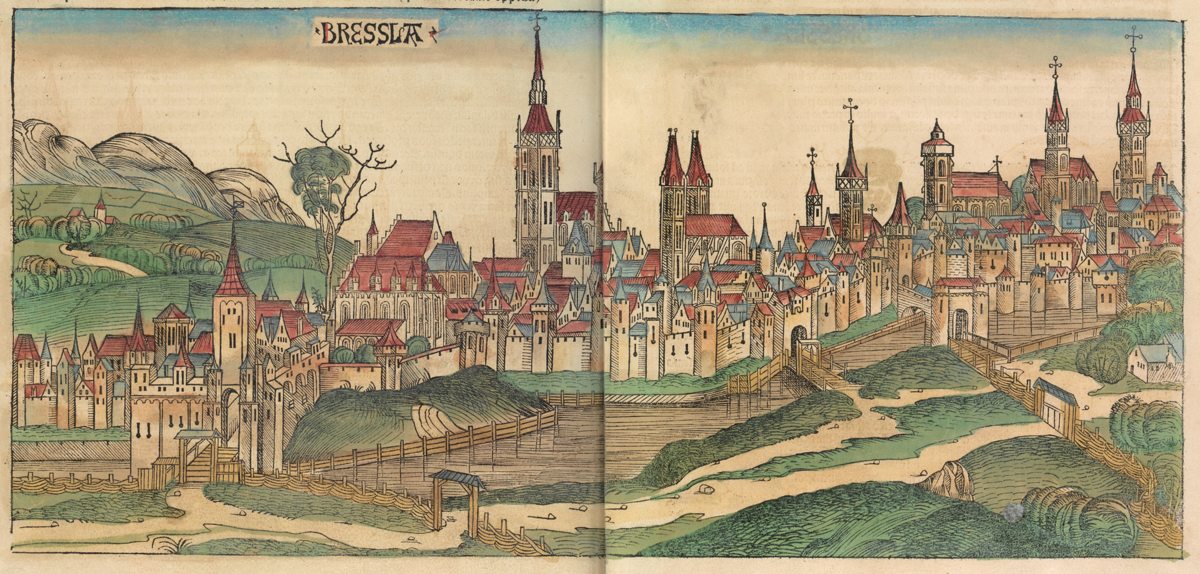In the 11th century, technical innovations in agriculture led to the accumulation of food surpluses. These surpluses were sold in towns called bourgs. This, and other factors discussed in this social reality, led to the creation of major trade networks in Europe and the beginning of the Great Trade. The urban and commercial boom gave rise to a new social class, the bourgeoisie, and the rise of artisans. Thus began the expansion of Western European societies around the world.

The city of Breslau in late medieval Poland
Here is a list of fact sheets dealing with urban and commercial development in the Middle Ages in :
The concepts covered in the following sheets go beyond those seen in high school. They are intended as a supplement for those curious to learn more.
- The medieval city (advanced notions)
- Social organization and population (advanced notions)
- Communes (advanced notions)
- Great trade (advanced notions)
- The Silk Road (advanced notions)
- Major European trading cities in the Middle Ages (advanced notions)
- Baghdad in the Middle Ages (advanced notions)
- Constantinople in the Middle Ages (advanced notions)
- Timbuktu in the Middle Ages (advanced notions)
- Cities, past and present (advanced notions)
- Globalization today (advanced notions)